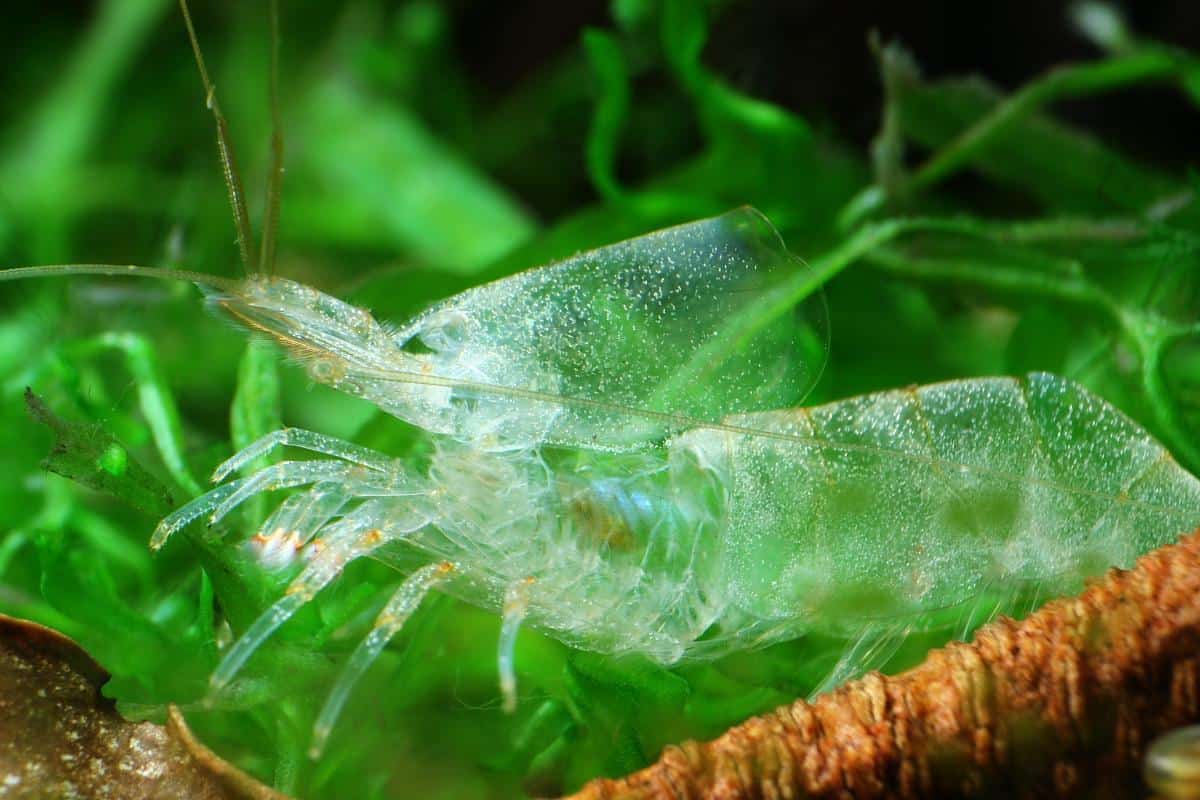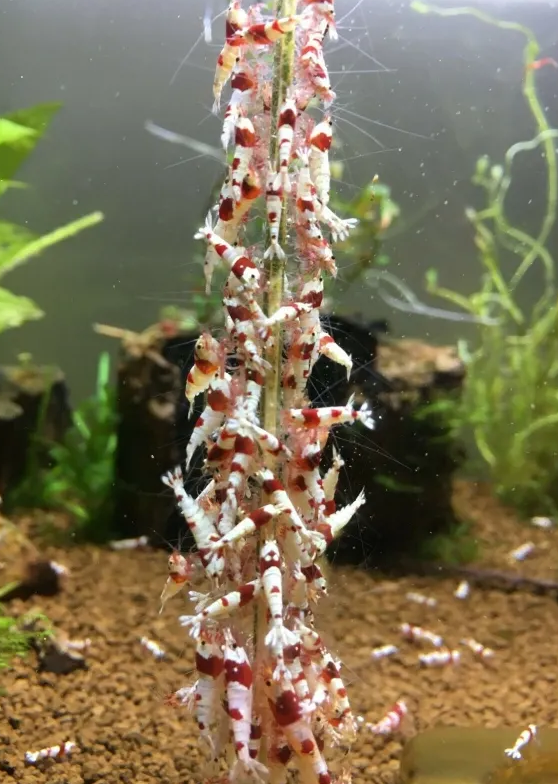The Molting Process in Shrimp: Growth, Challenges and Support
Molting is not only intriguing, but also vital to the growth and development of these small aquatic animals. In this blog we dive deeper into the molting process, discover why it is so important for shrimps, we discuss potential challenges and share tips to help you shrimps support for successful molting.
What is Shrimp Molt?
Molting is the natural growth process in which shrimps shedding their old, undersized exoskeleton and forming a new, larger exoskeleton to accommodate their growing body.
This phenomenon is an essential part of the life of all arthropods, including our aquarium shrimps.
Shrimps continue to grow until they reach adulthood, and the molting process allows them to adjust to their growing bodies.
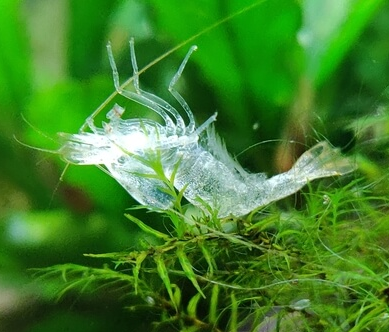
Why do shrimp molt?
Bored with shrimps has an important goal: to ensure that there is enough room to grow and develop. As a shrimp grows, its current armor becomes too small and its body can no longer grow properly. This is why a shrimp molts. He sheds his old armor to make room for his new larger exoskeleton. This way the shrimp can continue to grow and adapt to its expanding body.
How often do shrimp molt?
The boredom process shrimps is an important aspect that says a lot about their health and well-being. Usually, a regular and successful molting process indicates a healthy and well-fed shrimp.
Adult shrimp molt every 4 to 6 weeks throughout their lives. However, younger shrimp molt more often due to their rapid growth, possibly every 1 or 2 weeks.
It is very important that the water parameters remain stable, especially for newly moulted ones shrimps, to ensure that they can adapt well after molting. A healthy shedding pattern is a positive sign that shrimps are in good condition and thrive in their living environment.

The Different Stages of Shrimp Molting
The boredom process shrimps consists of several stages that must be followed precisely to ensure a successful boredom.
- Preparation: Before a shrimp begins to molt, it will retreat and prepare for the process. During this phase, the shrimp withdraws minerals from the current armor and stores it in a stomach stone, also known as a gastrolith.
- Detaching from the exoskeleton: During the molt, the new armor has already formed under the old one, so that the old armor has actually become too small. The shrimp absorbs water to loosen the old exoskeleton together with produced enzymes. This causes the body to swell and push out the old exoskeleton, creating a gap between the body and the old exoskeleton.
Before molting, they extract minerals from their current armor and store them in a stomach stone. Then the new armor emerges from under the old, causing the shrimp to free itself by absorbing water and using enzymes. After the successful molt, the vulnerable shrimp hides to allow the new armor to harden completely.
- Molting: The shrimp gently pulls its body out of the old exoskeleton through the slit. This requires considerable effort and may take some time.
- curing: After successfully molting, the new shrimp is fragile and soft. To allow the new armor to harden properly, the shrimp now takes extra minerals on. During this period, the shrimp usually hides and patiently waits for the new exoskeleton to fully harden and reach its usual firmness.
- Growth and regeneration: The new, larger exoskeleton allows the shrimp to function normally again, and any lost limbs begin to regenerate.
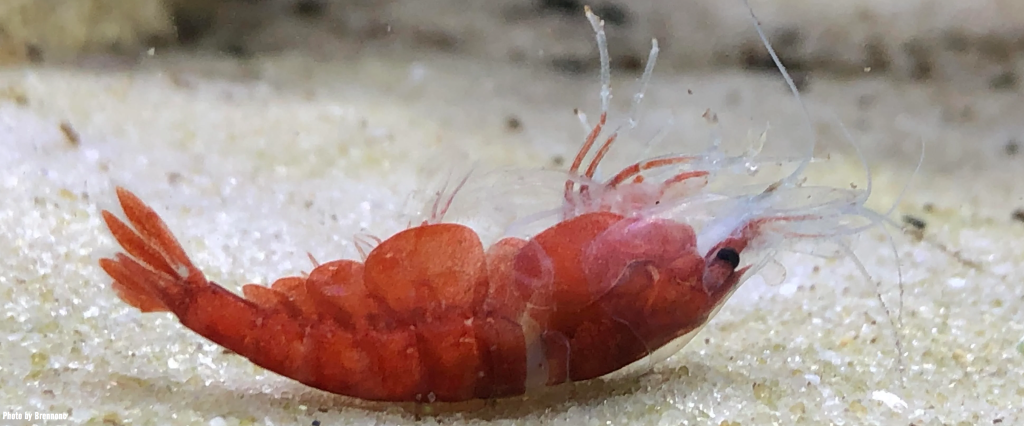
The Challenges of Shrimp Molting: Problems and Solutions
Can during molting shrimps encounter various issues that can affect their chances of survival and well-being. Boredom is his important part of life shrimps, when shrimps unsuccessfully being able to get through their molting cat this can unfortunately be fatal. Some problems during shedding can be:
- Incomplete molt: Sometimes a shrimp may have trouble fully emerging from its old exoskeleton, stalling the process. This can result in a shrimp with parts of its old armor attached to its body, making it vulnerable to predators and infection.
- Difficulty curing: The hardening of the new exoskeleton after molting is a critical phase. If the shrimp is not enough minerals can absorb to properly harden the new armor, the exoskeleton may remain weak and the shrimp may have difficulty with normal activities.
Moulting Problems in Shrimp: Major Causes and Preventive Measures
Unfortunately, shedding problems can occur with shrimps, affecting their chances of survival and well-being. Various factors can contribute to this, such as water quality, temperature, oxygen content, nutrition, and the right one minerals.
Water quality in the aquarium:
One of the possible reasons is the water quality, where unsuitable basic water values, a lack of oxygen or too high a temperature can cause problems during molting.
- overall Quality: It is essential that the water quality is right for the species shrimps that you love. so have Caridina shrimp different requirements for their water Neocaridina shrimp.
- Temperature: It is important that the water has the right temperature for you shrimps. When it gets too cold or too hot, this can affect molting.
- Oxygen: The oxygen content in the water is very important. While molting shrimps do not breathe, so it is very important that when they have finished molting there is enough oxygen in the water to catch their breath.
Nutrition:
Nutrition also plays an important role, and a varied diet with different foods, vegetables and leaves can contribute to your health shrimps. When they receive all essential building materials, this ensures that you shrimps be strong enough to survive a molt in good health.
Did you know that shrimp like to eat their old molt? During molting, a shrimp not only loses its old skin, but also valuable minerals and nutrients stored in that skin. By eating their old molt, shrimps can regain these essential substances. In this clever way, they recycle their own source of nutrients, which helps them to stay healthy after a boredom.
Minerals:
minerals play a crucial role in the molting process of shrimps. To have a successful molt shrimps and lobsters need proteins, calcium and chitin. This minerals are essential for building the new exoskeleton and strengthening its structure.
Although shrimps part of this minerals from the water, the gastrolith and their old scale, they can sometimes still experience a deficiency. That is why offering extra chitin before and during this process is really important. Regularly offering these minerals can help to prevent molting problems and the shrimps provide a healthy and safe molt.
Illness and Weakness:
Another possible cause of molting problems can be illness, where a weakened animal does not have enough energy to molt successfully. Both disease and weakness is often a symptom of the above factors, poor water quality, not enough and proper nutrition and few available minerals.
Shrimp King Mineral
Shrimp King Mineral is the ideal food for shrimps, especially during the molting period.
This food is composed of kelp and mannanoligosaccharides, which ensures the right minerals and healthy digestion.
Calcium carbonate contributes to good scaling, while turmeric provides natural coloring agents to improve the skin's appearance shrimps to keep alive.
With Shrimp King Mineral you give your shrimps high-quality nutrition with essential minerals and nutrients, promoting their well-being you promote a good boredom.
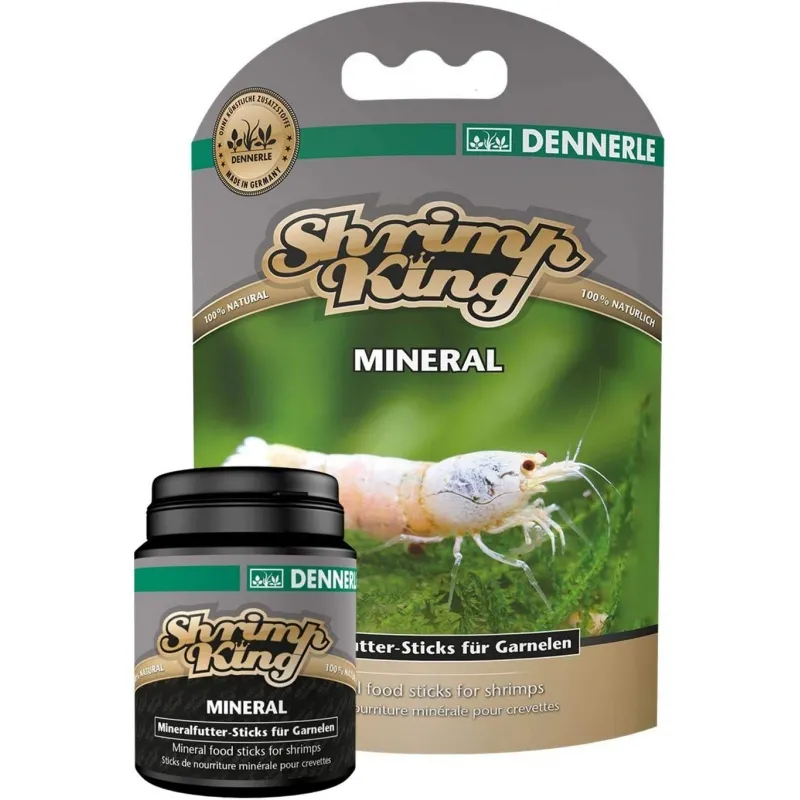

HS Aqua Crusta Chitin+
HS Aqua Crusta Chitin+ is an excellent nutritional supplement for your shrimps to support a good scaling.
It provides essential chitin to make the boredom process go smoothly and prevent holes from forming in the armor.
Adding this nutritional supplement to their diet will improve the overall health and well-being of your shrimps promoted.
HS Aqua Crusta Chitin+ is a valuable supplement that you shrimps supports during molting and helps to develop a strong armor.
The Critical Role of Proper Setup in Shrimp Molting
Proper establishment from the shrimp aquarium can have a significant impact on your molting shrimps. A well decorated aquarium offers plenty of hiding places and hiding places where shrimps can withdraw during molting. This minimizes their exposure to potential predators and reduces stress, making the molting process safer and more successful.
In addition, a well-balanced ecosystem with the right plant and bacteria for optimum water quality, which is essential for healthy molting. A stable environment with consistent water parameters contributes to your well-being shrimps and helps prevent problems during molting.
A well-equipped shrimp aquarium with lots of plants and mosses promotes a safe and successful molting process and can meet the natural nutritional needs of shrimps.
A natural one can do this establishment from the shrimp aquarium make a valuable contribution to the natural nutritional needs of shrimps. Plants en mosses retain nutrients well that your shrimps can be eaten. Also eat the shrimps like the organic residual materials on that of the plant come off. This way provides a natural establishment already partly in the nutritional needs of the shrimps, which benefits their well-being and health.
By providing a suitable establishment for you shrimps can you contribute to a successful molting process and the health of your shrimps promote significantly.



